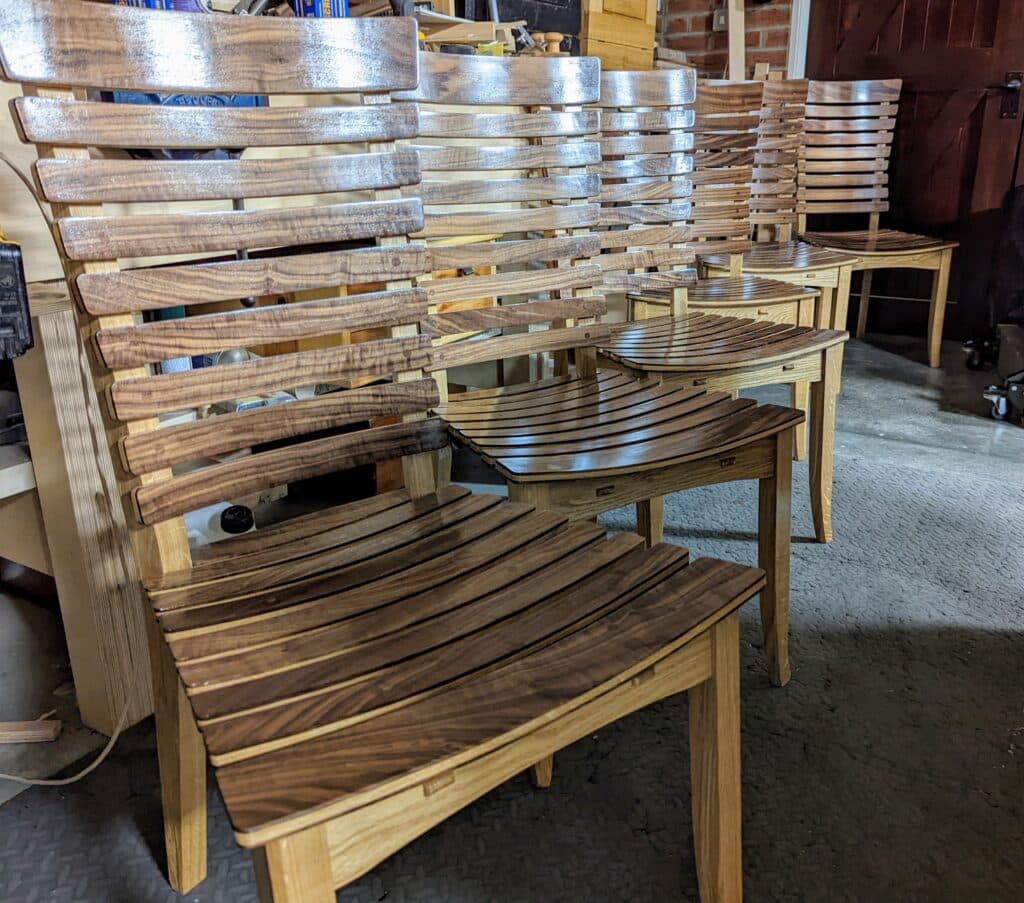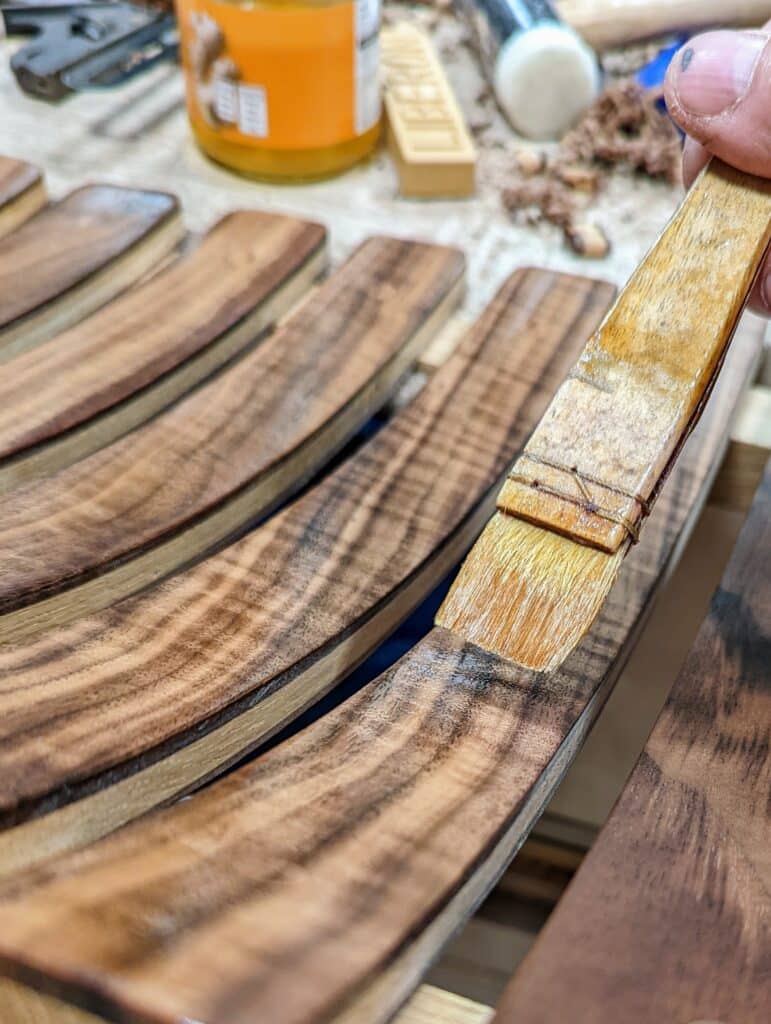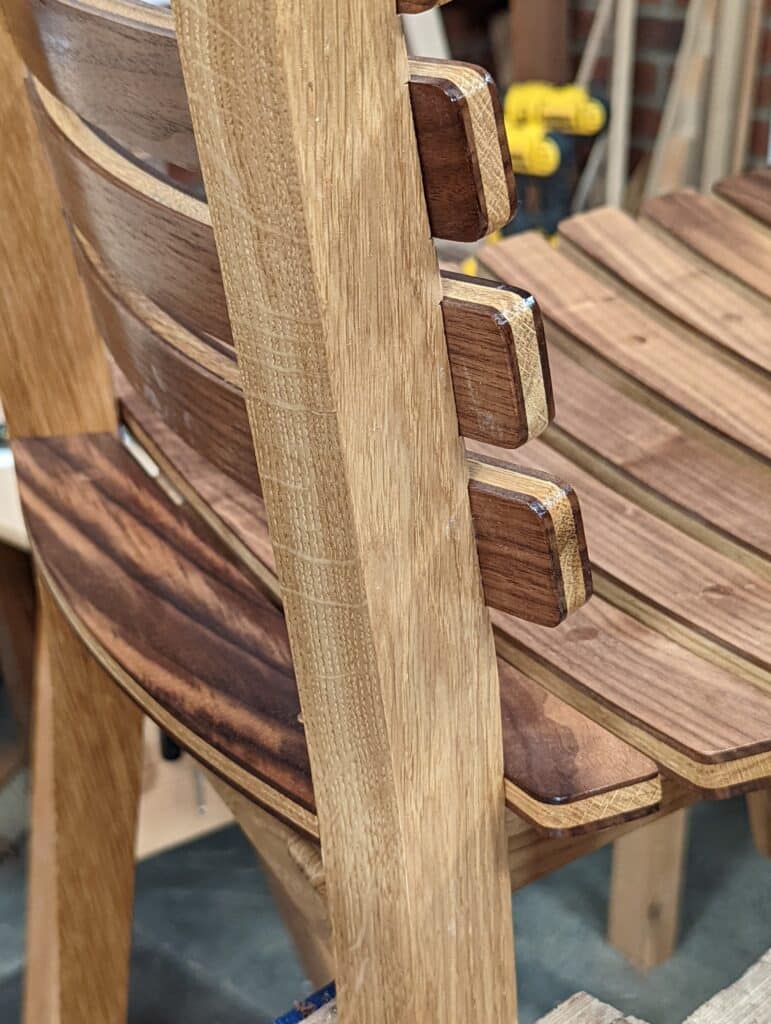Never Sure . . .
. . . But Maybe Ever-more Sure
In the beginning of my woodworking, I was never really sure in my working that the outcome would match the expectation and less so the demand of a boss. The chisel’s twist from the line, an awkward blow that glanced off sideways somehow. These all gave an outcome that sometimes offered no correction. It still happens but maybe once a month rather than once a day or once a minute. I’m never really sure if it’s some kind of compromise but I hear it all the more that, “It’s knowing how to fix your mistakes that makes you a better woodworker.” Of course, that’s not true at all. We all make mistakes and one way or another a mistake almost always needs fixing, but it’s more anticipating what can go wrong in the moment and then well ahead of time and taking the steps to prevent such things that maximises our competence, makes us productive and waste less time. Fixing mistakes takes time, often more time than getting it right the first time or even replacing the mistaken work and doing it over afresh, but wood splits when and where we don’t want it to, and planes, spokeshaves and scrapers catch slap bang in the mid-range of what will be seen.

Last night I brushed on the last coats of shellac to my six dining chairs. That last brush stroke was a full brush and as I lifted off the brush I steadied myself to watch the clear and sticky fluid flow out to its perfect final level. It was mesmerising to actually see the flow reach the edges and stop as the shellac seemed to freeze along the rounded corners and the crisp edges as if there was a boundary wall there to halt everything.

As I swept the workshop floor the unmistakable feeling of relief settled on me yet again, no different than completing my first pieces back in the mid-sixties, I felt utterly satisfied that once again, in a collection of six hand-made chairs, I had made something completely with my hands. I mean planed every stick and stem straight, square but then the shaped ones too, made every single joint with my hands and hand tools, and that’s 24 joints per chair. I felt the strain of it as I might free-climbing an outcrop of Derbyshire gritstone but pushing your body against the different tides gets all the more important the more you do.

I have three iterations of the prototype it took to get here. I will finish these too. I have some ideas I want to pull together and I don’t want to waste the wood in them. They will make occasional-use chairs somewhere. I have archived all of the dozens of pieces we have made for woodworkingmasterclasses.com over the past decades and seeing this new series of pieces actually take up their places in the designs of sellershome.com added a new dimension to our output and then too the input you make in tandem for your own homes. Maybe one day they will all go on exhibit somewhere in the future. The most important thing for me is that you are being trained in a way no one would have ever thought possible when I started out in the 1960s. How amazing is this new world we live in as pioneers.


Beautiful, Paul!
Hey Paul
How did you attach the slats to the base of the chair?
Thanks
Ken
Hey Paul
How did you attach the slats to the base of the chair?
Thanks
Ken
He screwed it to the base and then covered the holes with dowels. You can see them in the picture.
Thanks a lot
Ken
Always love your focus is on teaching and communicating and I have a place to come to and catch up
Hi Paul ,
I’ve just been reading one of your blogs from last year about power tools . We are just in the process of moving house and I’ve packed all my hand tools up ready for the move . The one thing I’ve not packed is the circular saw .
I totally agree these things have their place but I can’t wait to get into my bigger garage and set up my Seller’s bench and get working again .
The circular saw will come in handy for when I’m boarding out my new garage, but then I’ll put it away again .
Thanks Ron
They look beautiful!
Well done Paul!
Dear paul
The you tube video sellers home is a fantastic video. The video is a credit to the team.
Rh
Beautiful thoughts reflecting the expertise built over a lifetime!
I want to add that for the first time in my life, just two days ago, I used a router plane. Truer words were never spoken than those you uttered in your video when you said, “You’ll wonder how you ever lived without it”. If I were able to travel fifty years back in time and speak to my younger self, I would say, “Buy Apple and Microsoft stock in the next ten years-but today, BUY A ROUTER PLANE!”.
-Best, emily
Beautiful chairs! I love the laminated slats. Those were bent by dry pressing laminations into a form, right? Walnut on the outside–inside lamination(s) were what?–Ash? Is the radius the same for all slats? Thanks for all you inspire in us, Paul.
Hi Paul,
Great post! I thoroughly enjoy reading each one. I recently purchased your Essential Woodworking Hand Tools book and found great information. I’m going based off of your recommendation for tenon saws but stuck on the many options out there.
I have narrowed down my list to possibly the Veritas standard 14TPI dovetail saw and also the Veritas rip carcass saw which is 11” blade length and 12TPI. However, they have a “tenon” saw that is larger, 16” blade with 9TPI. Would the first two be a viable option for most everyday work or is this larger saw necessary? I’m confused as to what is the main difference between the carcass saw and the larger tenon saw besides length and teeth pattern.
Thanks!
I think I use my 10″ gents saw more than any other backsaw. I cut dovetails with it and crosscut smaller sections to tenons and then much of my crosscutting of lighter weight materials say up to 3″ wide and 3/4″ thick. I don’t altogether know why people favour a pistol grip small backsaw. I only own one 16″ tenon saw but rarely ever reach for it. For close-combat work, I find it less positive than a 14″. Anything longer I prefer to use a handsaw. My favourite there is the very inexpensive 22″ Spear and Jackson available on Amazon for £14.78 here in the UK currently but I have some vintage Disston 16″ versions I love to use too. I think it is better to leave gaps between purchases where possible. Use one for a week or three and see if it favours you. We tend to think that because we’ve got buying ability we can just exert our freedom to buy when it is rarely ever the best thing for us, in my view.
Thank you for the reply. I’m completely new to hand tools. Following you has taught me a lot. I was able to restore a vintage number 4 and 5 and very proud of it. Not spending more than $100 was also nice. Going back to the saw topic, I was under the impression that gent saws were a little more difficult to sharpen compared to a standard dovetail saw. I guess I still have the doubt in my skills being a beginner to hand tools.
Also, thank you for the advice on purchasing. It’s all to easy to get wrapped up with seeing everything online, YouTube, etc.